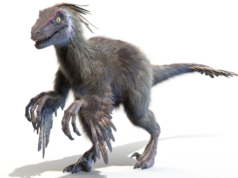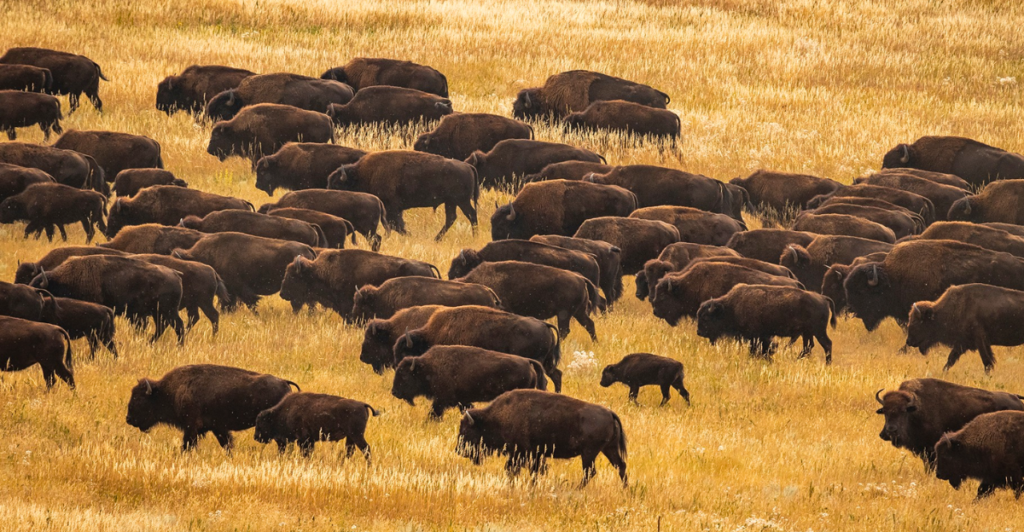
The American bison is a species that plays an important role in ecosystems across the United States. They have a rich and complicated history of population loss that’s ultimately ended in the species’ recovery through conservation. Here are some U.S. states where you can still see them roam.
Wyoming
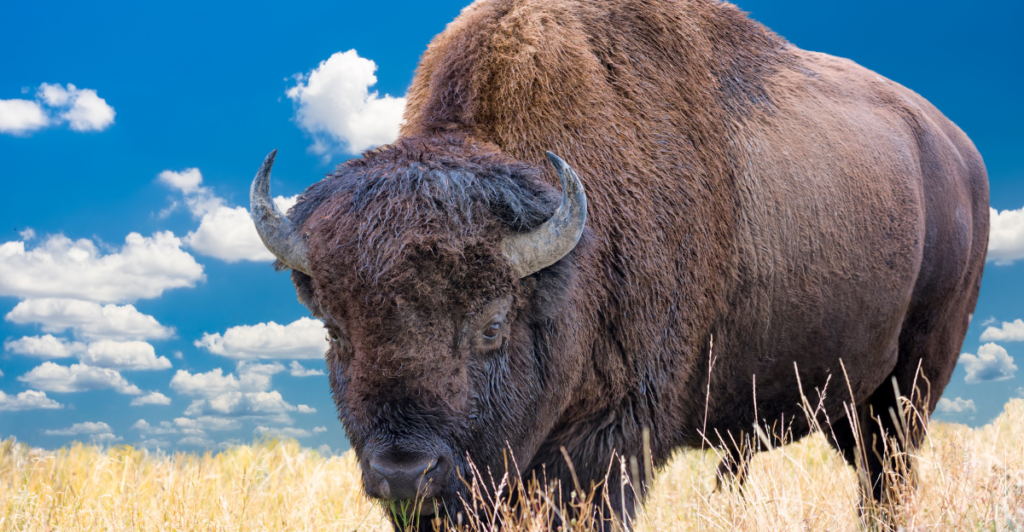
Yellowstone National Park in Wyoming is the only place where bison have had a healthy population since prehistoric times. There are nearly 5000 bison that roam Yellowstone and are the biggest free-roaming herd in the United States.
Montana
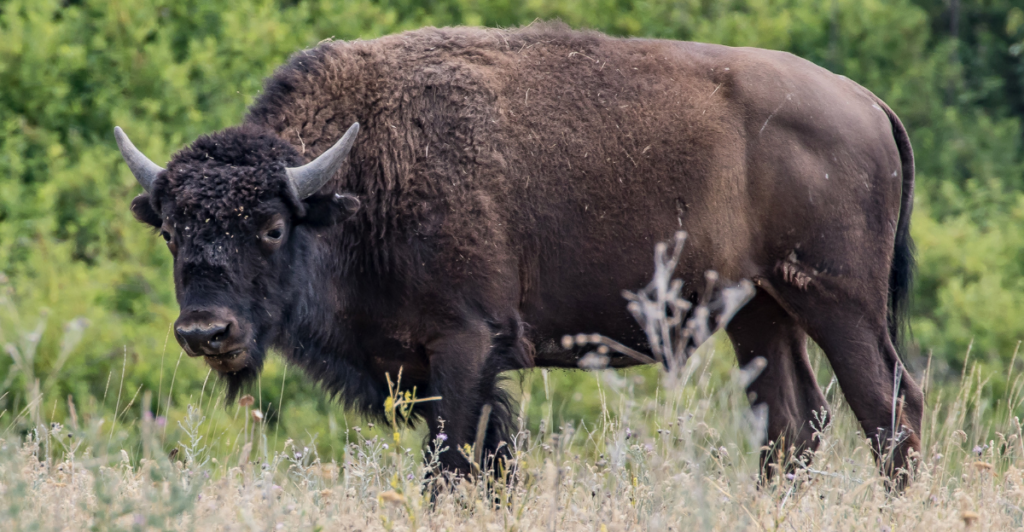
Montana also has Bison in Yellowstone and in the National Bison Range. With their population recovering, they are also helping to keep up the biodiversity through vegetation control via grazing and soil enrichment with their manure.
South Dakota
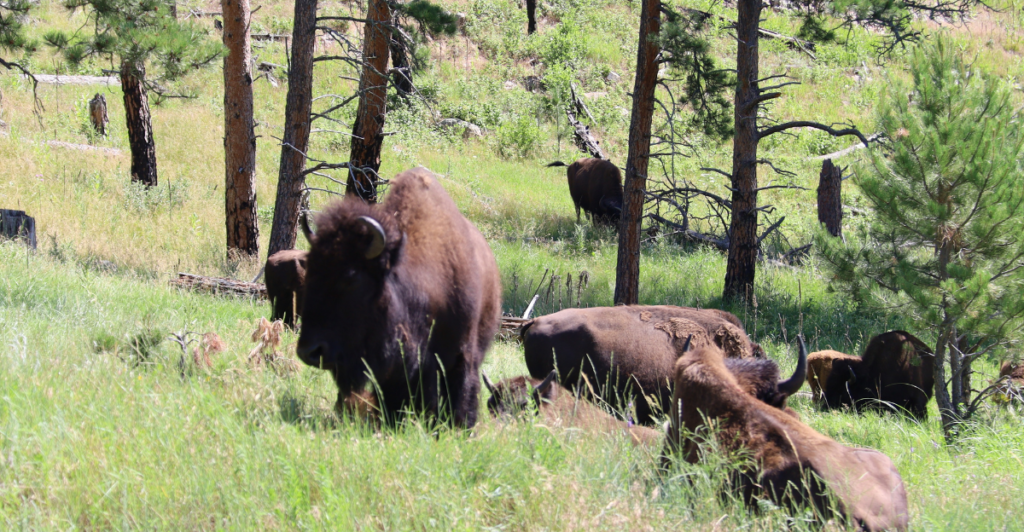
Wind Cave National Park in South Dakota has one of the most genetically purebred bison in America. Conservation work over the years has ensured that the bison have stayed in grasslands, which is their natural habitat. This has made sure that their ecological habits have stayed intact.
North Dakota
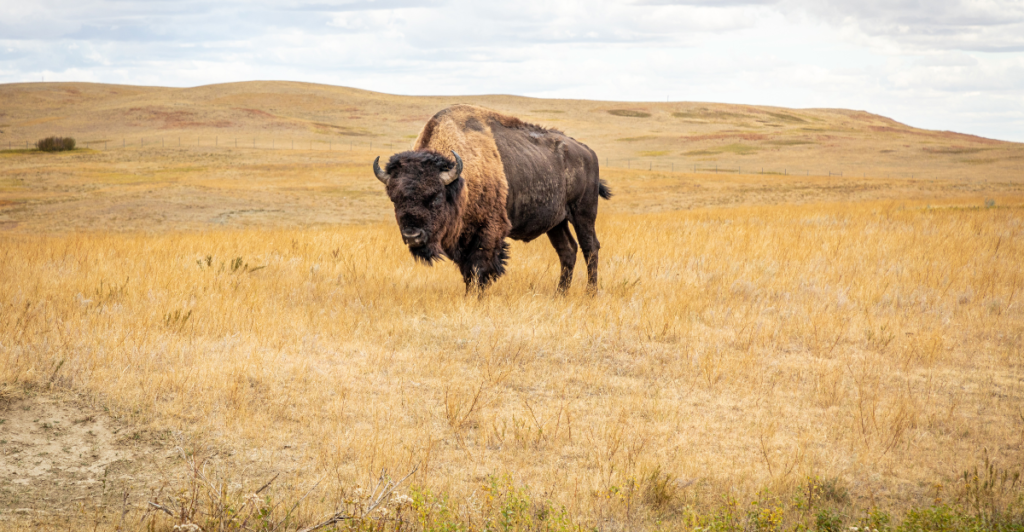
In North Dakota, there is a thriving bison population living in Theodore Roosevelt National Park. Tourists and locals can visit the park and get a close look at these wonderful animals roaming through the natural terrain, giving them a glimpse of a sight similar to the American West.
Oklahoma
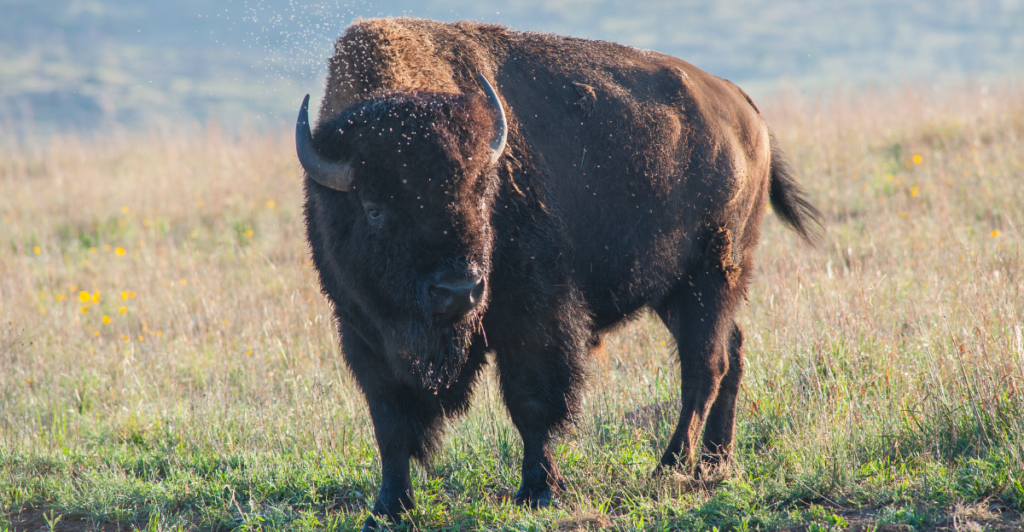
For over a hundred years, the Wichita Mountains Wildlife Refuge in Oklahoma has been a safe haven for the local bison population. When bison numbers were extremely low at the beginning of the 20th century, it was one of the few places where bison started recovering.
Colorado
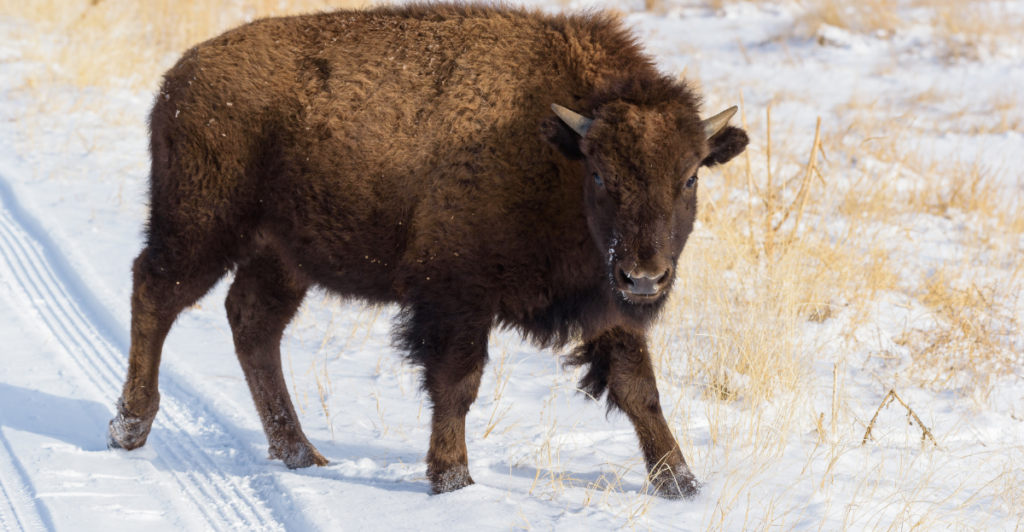
The Rocky Mountain Arsenal National Wildlife Refuge in Colorado is a sanctuary for local bison. The herd that lives at the wildlife refuge helps with the local ecosystem, with their wallowing creating microhabitats for insects and amphibians.
Utah
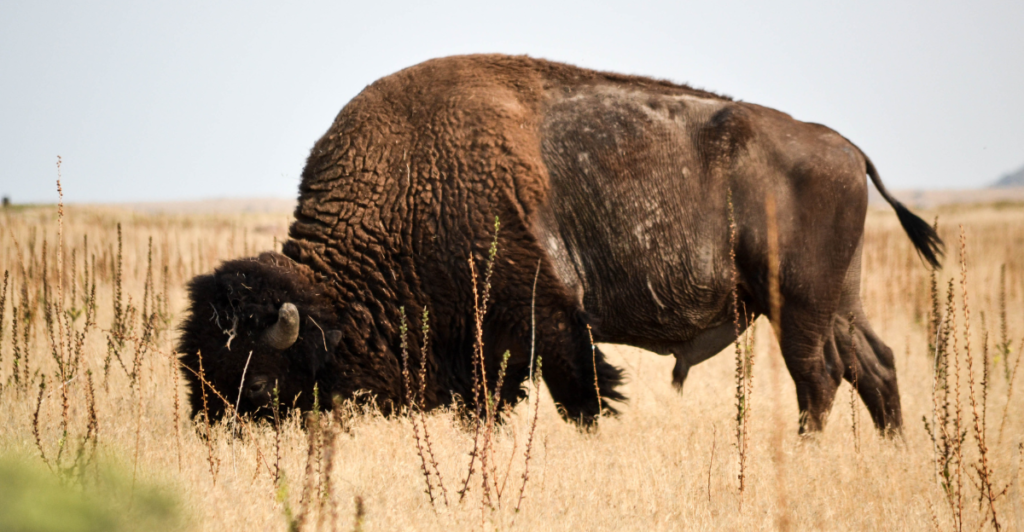
In Utah, there’s a thriving bison population living on Antelope Island State Park close to Salt Lake City. The herd roam the island environment in mostly isolation, similar to how they would have over a hundred years ago.
Nebraska
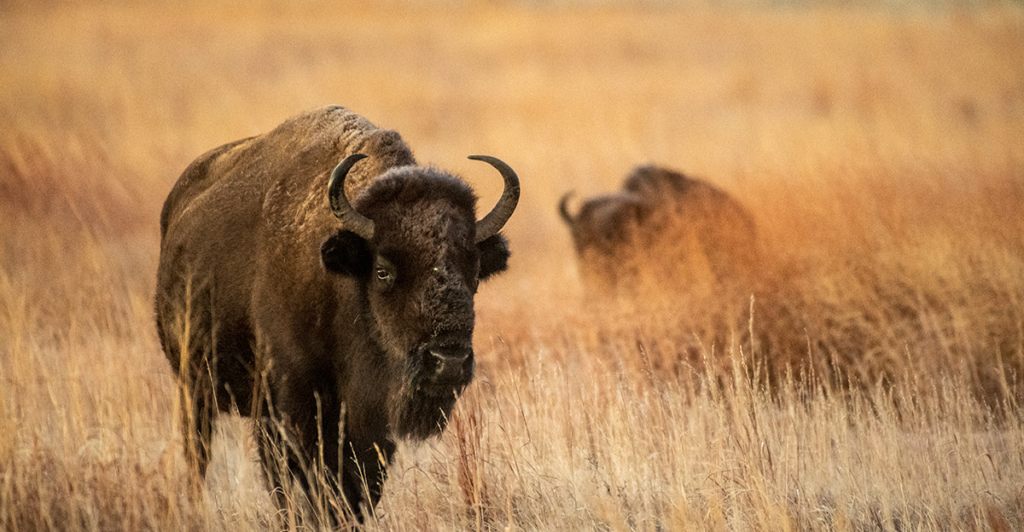
Nebraska houses a herd of bison at Fort Niobrara National Wildlife Refuge, where the local population helps prairie ecosystems thrive by restoring them through grazing to ensure that no one grass species becomes dominant.
Kansas
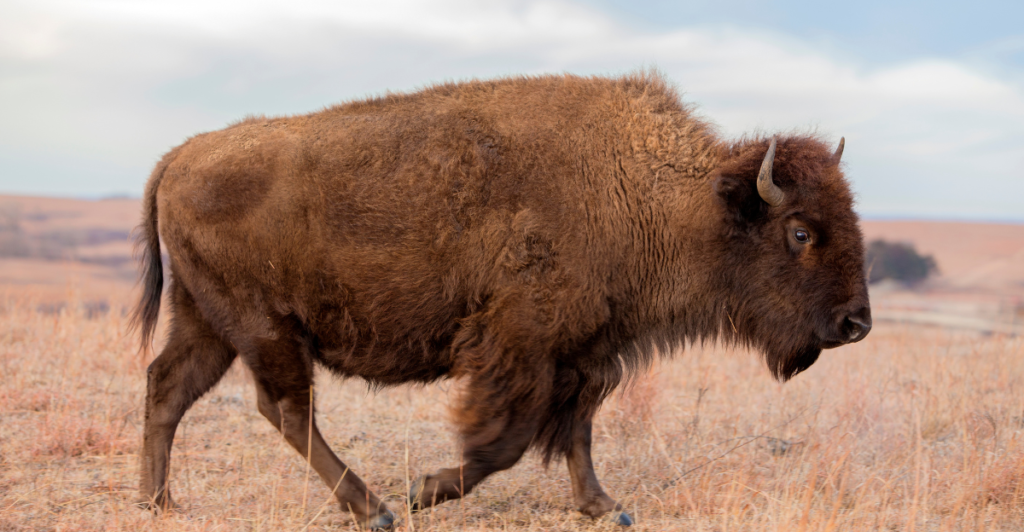
Tallgrass Prairie National Preserve in Kansas has a bison population. Bison are extremely important in their ecosystems, and contribute more than most other grazers. They help make sure that one of the last tallgrass prairies survives through grazing, manure, and wallowing.
Texas
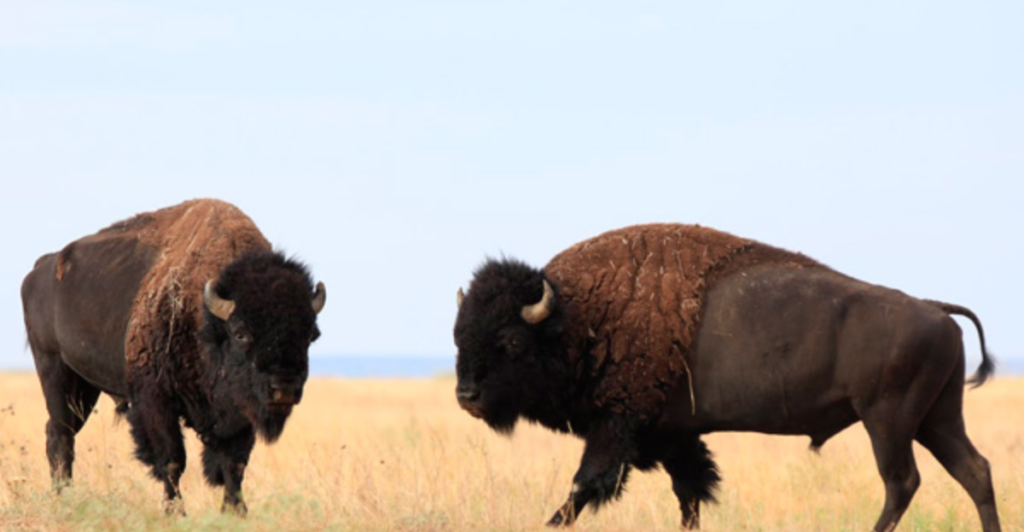
Caprock Canyons State Park in Texas has a history of protecting bison. Near the end of the 1800s, a rancher named Charles Goodnight famously protected one of the last wild bison herds, and now, they thrive in the park. Without his conservation, they may have been gone from this region.
Indiana
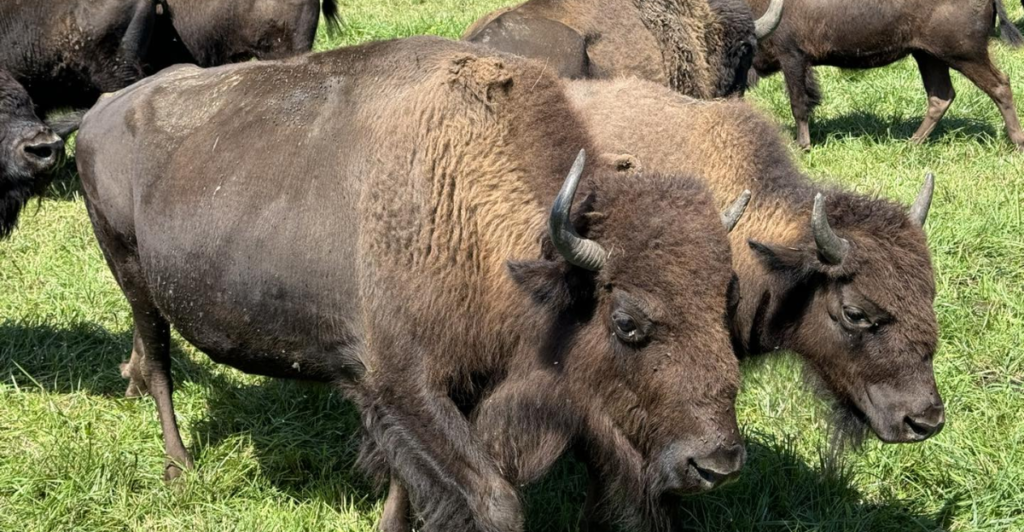
Kankakee Sands Preserve in Indiana has a small population of plain bison roaming freely. Despite not being a large herd, the bison still has shown that they have a significant impact on the environment around them when they are present, restoring much of the prairie landscape since their recovery.
California
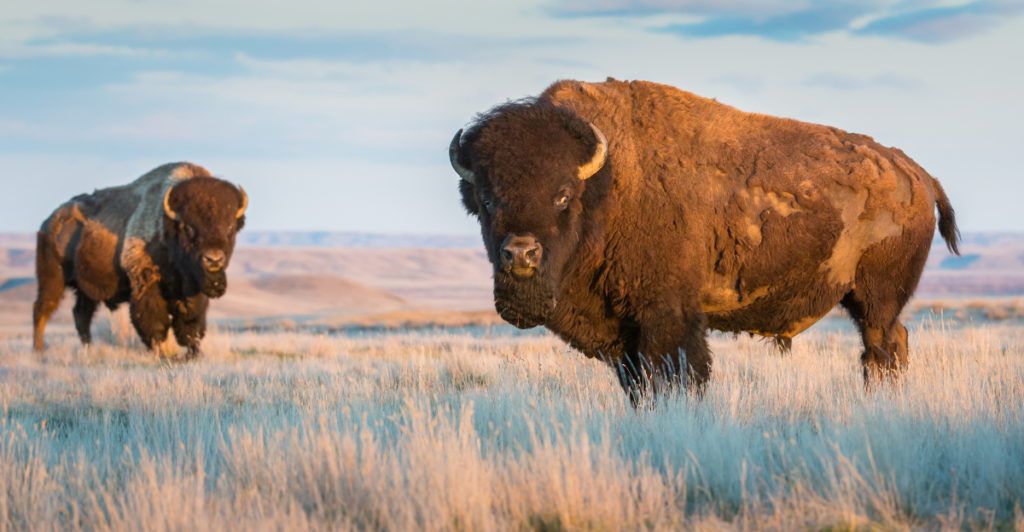
In the 1920s, a herd of bison was introduced to Catalina Island off the coast of California for the film The Vanishing American. After the movie was shot, the bison population on the island remained, and since then, they have attracted people to see them year-round as their population steadily increased.
Explore more of our trending stories and hit Follow to keep them coming to your feed!

Don’t miss out on more stories like this! Hit the Follow button at the top of this article to stay updated with the latest news. Share your thoughts in the comments—we’d love to hear from you!



